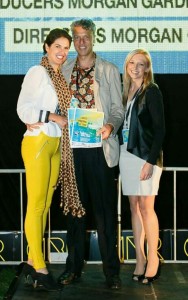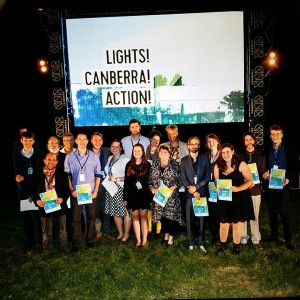2016 Lights! Canberra! Action!
So, following on from the success of being shortlisted for our entry in the 2015 Lights! Canberra! Action! Marina and I set about making an entry for this year's short film festival. The film is titled '237' (after the hotel key that must appear as one of specified objects).
The format of the festival stipulates that entrants have 10 days to shoot and submit a film. The film must contain 10 specified objects or places and be somehow linked to a nominated theme ... this year's theme was 'Chance'. The ten objects or places for this year's film were:
- A deck of cards
- PJ O'Reilly's - either southside or the city
- Weather Report 'Chance of rain' - this item can be audio
- Weetangera Cemetery - MAP
- A question mark
- The National Film and Sound Archive
- Dice
- The Police Box on Red Hill by Geoff Filmer - MAP
- A raffle ticket
- The key to room 237, Avenue Hotel
We managed to include all ten ... see if you can spot them!
Our movie is largely a meditation on the nature of freedom, it's a kind of love story and it's narrated beautifully in Italian by Marina.
And since we were shortlisted and made the Final Twelve we got to attend the public screening of all twelve shortlisted film at the Rose Gardens, Old Parliament House.
Here's a picture of Marina and I accepting our finalist certificates from Chris Bourke MLA
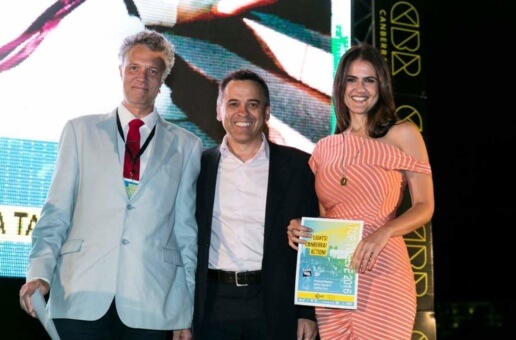
Please let us know what you think of the movie in the comments below :-)
The One Project
Toward the beginning of the year I had lunch with my friend Hilary Wardaugh, an accomplished photographer around Canberra, and she described a project she was putting together. Hilary explained that she had a Nikon FM-2 manual film camera with a 50mm f/1.8 lens laying around and was planning to load a film into it, compile a list of photographers and pass the camera to each photographer and ask each one to take a picture. Once the picture has been taken, it became the photographer's responsibility to contact the next person on the list and arrange to get the camera to them. At the end of this process, about 3 months, Hilary will get the film developed and scanned. Each photographer will their digital negative and can process it as though preparing a print in the darkroom ... that is curves and levels and filter colours but no pixel based PhotoShop edits et al. The processed negative will be passed back to Hilary who will then arrange printing of the image for the purposes of exhibition. Two shows are currently lined up for the prints, one local (at the Huw Davies Gallery in Manuka) and one in Sydney (as part of the Head On Photo Festival).
The camera travels in a box containing the list of photographers, a cable release and a book in which the photographer is encouraged to write a short piece about their picture. The project is called The One Project.
So far so good... the only stipulation was that our picture had to be a portrait!
No pressure... it's only a single frame... I mean it's not like the other twenty-odd photographers are all accomplished photographers (they are!) and will be doing their very best as well... reading through the book I smiled when I saw that everyone else was obsessed with light, exposure and focus ;-)
I wanted my portrait to be of my artistic collaborator Marina. I have photographed Marina extensively over the past two years and together we came up with the idea that often you only have an impression of someone through the images you see of them. So I put together a grid of photos I have taken of Marina and projected them digitally across her face and arms and splashed across a dark background the pictures resemble stained glass. I set my digital camera to emulate the manual settings of the FM-2 and to act as a light meter for correct exposure. The effect is one of an essentially dark shadowy image with bright pictures shaping contours but ... visible upon closer inspection ... you see Marina illuminated and looking out from the shadows. It looks great.
Then it was swap the camera over on the tripod, recompose and recheck the settings (and recheck them again!) ... I re-posed Marina and got the composition right and while she was looking perfect I felt it was right pressed the shutter release ... pa-tchang! Done! In my excitement however I had failed to warn Marina I was about to take the picture and she thinks she may have blinked but can't recall where the blink may have been in relation to the exposure. I'm sure it'll be fine! I do feel like a goose though! My main concern is that given the dark nature of the photograph (light-wise not emotionally-wise!) and the different response of the film to shadow and highlight my contribution to the project may in fact just turn out to be a black frame! But then that's the risk you take in trying something less safe I guess :-)
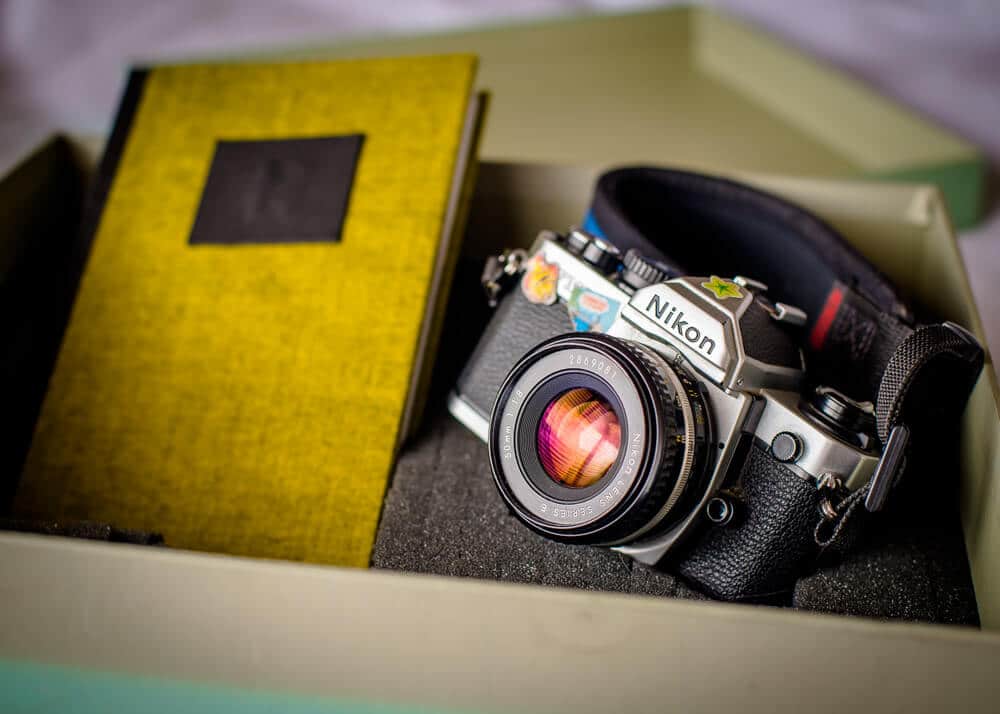
The photos I took with the digital body look great and I would include them in this post but I don't want to publish anything until I see how the film version came out which won't be until November. I'll do a contrast and compare then as a separate post :-)
But I would like to thank both Hilary and Marina. Marina firstly for being my muse and sharing her art, ideas and vision so freely with me ... my world simply wouldn't be the same without her in it. And Hilary for coming up with the idea of The One Project and making it happen, for the necessary artistic angst and discipline (well OK maybe I didn't take home all of the discipline lesson) this project inspired in me.
Lights, Canberra, Action!
Well, we didn't win any prizes at our inaugural LCA film festival ... but ... we did get our art piece This Too Shall Pass shown to a rather large crowd and people were coming up to us after the event and saying how much they enjoyed it and how good it was to see an Arthouse film make it into the finals ... so it went pretty well really. We're now planning our next film project and that's kinda exciting too :-)
This Too Shall Pass
UPDATE: Our film has been shortlisted! It will be screened this Friday Night at the Senate Rose Gardens as part of the Enlighten Festival! Woo-hoo!
Last year, about this time, my artistic collaborator Marina and I attended the screening of the 12 finalists in the Lights, Canberra, Action! short film festival. We thought that next year we'll make a film and enter*. Well 'next year' is now 'this year' and the film festival is on again.
Essentially filmmakers have the better part of a week to write, direct and produce a film of no more than 7 minutes duration. All shooting and production must occur within that time. There's a theme (this year's was 'Swings & Roundabouts'). Another twist is the inclusion in the film of items or places provided, scavenger hunt style ... I've included this list below.
So, true to our intentions ... we made a little film together under our arty-collaborative umbrella 2 Tens & A Tomato. The film is titled "This Too Shall Pass" and runs for 6m44s. It's presented in black and white and is a boy meets girl story about passing through a dreamy world of isolation and longing to find intimacy and hope in a roundabout way. Music was produced and performed by the wonderful Charles Sage (Hessien and The Rothko Chapel) solo project y0t0. His moody atmospherics work so beautifully with the film.
Anyways ... here it is. Would love to hear what you think about it. We're kinda a little proud of it and reckon it turned out alright considering we had next to no idea what we were doing.
*We also thought "how hard can it be?" ... the answer as it turns out is "quite hard really" ;-)
List of Items (see if you can spot them all in our film)
- A swing in a park
- A road roundabout
- A set of scales (for weighing)
- 'On the Road Again' sculpture by Ann Ross at Lyons Shops
- A ferris wheel
- The Mandalay Bus (in Braddon)
- The gold tiles outside the ACT Legislative Assembly
- An underpass
- The Chess Pit (Garema Place)
- The High Court (exterior)
An eclectic set of items and sites as you can see.
Lights, Camera, Action! is part of the Canberra 2015 Enlighten Festival and sponsored by artsACT.
Links
- Lights, Canberra, Action!
- Enlighten
- y0t0 (or Year of the Ox)
The Beauty of Film
I recently attended an artists retreat with some lovely people. There were photographers, sculptors, painters, poets and writers and some great cooks amongst them! We spent three nights at an old house on the far south coast of New South Wales. It's there that many of the photographs featured in recent posts were taken. When I get around to it I'll even publish them all in the same place when I can get my head around all the great things that went on there.
For this post though I wanted to talk about the beauty of film. I took two cameras to the retreat; my Nikon digital and my Mamiya medium format camera. I got the medium format negatives and scans back from the lab this week. When I first started out in photography there was none of this digital business. I learned to develop my own negatives and darkroom techniques for turning those negatives into photographic prints ... the smell of acetic acid still holds a dear place in my heart as does the smell of a freshly opened pack of film. It's a wonderfully analog process - layers of light sensitive emulsions on a clear base change chemically when exposed to light. I like to think that my post-processing of my digital pictures for the most part mimics what I could do in the darkroom albeit on a much compressed time scale. I rarely manipulate my images much beyond tonal controls and cropping anyways. While I have embraced the digital revolution and all the whizzbangery it offers the modern photographer ... there's something about shooting film (apart from its smell).
The saturation and dynamic range surpasses that of my digital camera (a D80) and the rendering of detail is a wonderful thing to look at. In the photo of friend Greer presented above I had a roll of (very out of date) Fujichrome NPC160 film ... we're talking EXP:2007(!) which was given to me by another friend who'd had the film in his fridge since then. The negs came back beautifully. I took a similar shot with the Nikon but it doesn't have anywhere near the presence that this one has. Another consequence of shooting film is how much you value each frame. I get between 12-15 frames from a roll of medium format. I have to remind myself that it's both not very many and ample! That and how spoiled I have become with auto-focus, adjustable ISO and instant preview. When shooting 35mm I still find myself instantly checking the back of the camera to see how the shot came out ;-)
How about you? Are you purely digital? Did you transition from film to digital or have you only ever known digital? Have you returned to the beauty of film or picked it up anew? I'm interested in this ... do tell!
Guilty Pleasures: Battleship (2012) a short review
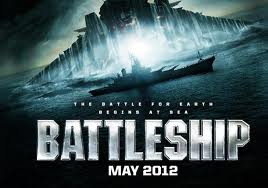 I admit to a guilty pleasure. I do enjoy a high-tech sci-fi shoot-em-up special effect showpiece. Transformers was fun (2&3 deplorable!) and as long you didn't think too hard was an enjoyable spectacle. Battleship (2012) was too. There are plot holes you could sail the USS Missouri through and the acting was handled adequately despite the poor script. In addition it had the overall feel of a defence force recruiting puff-piece ... this time for the Navy ... all those beautiful young things and crisp white uniforms. That said, a lot of them died. The special effects and battle-tech were quite spectacular ... if you've ever wondered what a destroyer being systematically torn to bits from the inside by a shiny high-torque rotary gear shredder might look like then this is the flick for you.
I admit to a guilty pleasure. I do enjoy a high-tech sci-fi shoot-em-up special effect showpiece. Transformers was fun (2&3 deplorable!) and as long you didn't think too hard was an enjoyable spectacle. Battleship (2012) was too. There are plot holes you could sail the USS Missouri through and the acting was handled adequately despite the poor script. In addition it had the overall feel of a defence force recruiting puff-piece ... this time for the Navy ... all those beautiful young things and crisp white uniforms. That said, a lot of them died. The special effects and battle-tech were quite spectacular ... if you've ever wondered what a destroyer being systematically torn to bits from the inside by a shiny high-torque rotary gear shredder might look like then this is the flick for you.
Throw in a geeky scientist who discovers his backbone, a double amputee vet from Aphganistan, a tepid love interest and lots of cooperation with the captain of a Japanese destroyer and you have a reasonable idea of what's going on. The USS Missouri (a WWII battleship moored as a museum piece - armed and fueled no less) was brought into the action by a small group of former crew members now serving as ship guides ... armed and fuelled? Really? The love interest annoyed me.
Great to look at and some humour in there too, the film is apprently based on the grid-based game 'Battleship' by Hasbro though I have to say loosely based ... very loosely based.
I did get to see the trailers for the Avengers (yawn) and Prometheus the new effort from Ridley Scott. I got the feeling from the cinema audience that that was the film everyone is waiting for ... it looks bloody amazing :-)
Battleship (2012) screening at Dendy Canberra.
Add EXIF data to your scanned images
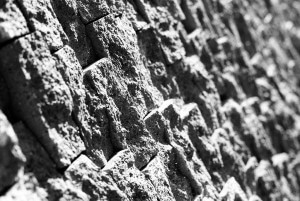 OK ... so you've been out taking pictures with film. You've got the film developed and most likely had the negatives scanned so you can add the images to your digital library.
OK ... so you've been out taking pictures with film. You've got the film developed and most likely had the negatives scanned so you can add the images to your digital library.
Perhaps you like to use keywords to index or sort your library. Maybe you like to see only those photos taken with a particular model camera ... like your film camera? Digital cameras record information about the image captured in the form of a series of EXIF tags (Camera, Lens, Aperture, Exposure etc). It's these tags that applications like Picasa, Lightroom and Aperture read when importing your images. Scanners apply EXIF data to the images resulting from scans. Film cameras do not (with some rare exceptions) record EXIF data so you'll need to create it. So here you are, seeking to add EXIF data to your scanned images.
Since Adobe’s Lightroom and most of the other tools that I use are geared towards DSLRs, I have felt the need to add as much EXIF data to my scanned images as possible. The more photos I add to Lightroom, the more important Smart Collections are getting to me and the less I want to rely on keywords. Things become even more complicated when I started using more than one film camera and wanted to use the standard ways to sort my photos by camera. Besides, I have this blog and display my photos online, my visitors want to inspect the EXIF data to get a feel for how I arrived at a particular exposure.
If you have googled how to update EXIF data in an image and you have landed here ... you have probably also come across the ExifTool by Phil Harvey. This tool can do everything and more, but in the end it is a Perl script with a command line interface. What was needed was a graphical user interface to the ExifTool and Bogdan Hrastnik has stepped up and developed the ExifToolGUI Windows tool for which you can find all information here. Strongly recommended!
After a little bit of time spent in the 'Newbie' stream of the ExifToolGUI forums I worked out how to alter the EXIF data of my scanned film images to reflect the Camera and Lens used to capture the image. Voila! Best of all I can modify the files as a batch. Since my images were already in Lightroom, I selected the images in the Library view, right-clicked them and selected 'Metadata > Read metadata from files' to refresh the image tags reported within the library.
From here they arced across the sky - Mamiya 645 Super
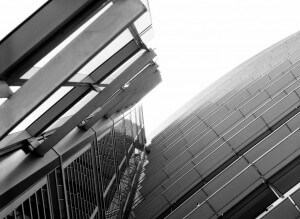
I recently 'inherited' a Mamiya 645 Super medium format camera. I just got my first negs (and medium resolution scans) back from the lab. I took a roll of expired Ilford SFX 200 to see if the beast still worked. It did but the battery died about two shots before I took this. I remembered that the camera will shoot even if insufficient power is contained in the battery but that the shutter speed is fixed at 1/60sec. So this one's fully manual and literally a straight scan from the neg ... ooh I'd forgotten how negatives are just the most beautiful things.
From here they arced across the sky
Taking the Street - Bill Cunningham New York
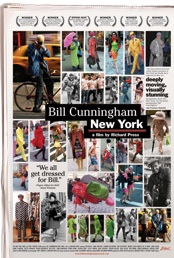 I went and saw Bill Cunningham New York last night at Dendy in town. What an insightful and inspiring movie! For those of you not familiar with the Bill Cunningham, he is a street photographer who has been photographing the clothes of the streets of Manhattan for the past 40years. He's over 80 and still gets about on his bicycle. This documentary was made in 2010 and released in March 2011. For me, the film provided a much-needed (for me anyway) alternate perspective on the whole notion of 'Street' photography; something I struggle to balance ethically. Cunningham is only interested in the clothes ... and interesting clothes at that. That people are wearing these clothes speaks out to be admired or seen as different and Cunningham responds to that by taking their picture. I guess where I begin to have issues with 'Street' photography is when it becomes inherently intrusive in a voyeuristic sense ... the desire to share in the grief or suffering that is not your own. It seems to me to be largely a product of a middle-class seeking to appropriate something missing, something more real or valid than what they themselves feel is present in their own lives. That said, I have seen some fantastically powerful images of the ordinary people engaged in their lives unaware of how in touch with the real they are. At the same time I have seen whole albums of ridiculously gratuitous (and highly lauded) 'Street' photography that borders on the disturbingly voyeuristic. What struck me about the film last night was that here is a man who has dedicated his life to photographing the happenings on the street, producing an unparalleled historical archive. Perhaps he is equally aspirationally voyeuristic? Maybe Cunningham conducts himself in a more kindly way ... there certainly seems nothing creepy or ulterior about his approach. I found the film intensely interesting and there were some great people interviewed. Go see it if you can.
I went and saw Bill Cunningham New York last night at Dendy in town. What an insightful and inspiring movie! For those of you not familiar with the Bill Cunningham, he is a street photographer who has been photographing the clothes of the streets of Manhattan for the past 40years. He's over 80 and still gets about on his bicycle. This documentary was made in 2010 and released in March 2011. For me, the film provided a much-needed (for me anyway) alternate perspective on the whole notion of 'Street' photography; something I struggle to balance ethically. Cunningham is only interested in the clothes ... and interesting clothes at that. That people are wearing these clothes speaks out to be admired or seen as different and Cunningham responds to that by taking their picture. I guess where I begin to have issues with 'Street' photography is when it becomes inherently intrusive in a voyeuristic sense ... the desire to share in the grief or suffering that is not your own. It seems to me to be largely a product of a middle-class seeking to appropriate something missing, something more real or valid than what they themselves feel is present in their own lives. That said, I have seen some fantastically powerful images of the ordinary people engaged in their lives unaware of how in touch with the real they are. At the same time I have seen whole albums of ridiculously gratuitous (and highly lauded) 'Street' photography that borders on the disturbingly voyeuristic. What struck me about the film last night was that here is a man who has dedicated his life to photographing the happenings on the street, producing an unparalleled historical archive. Perhaps he is equally aspirationally voyeuristic? Maybe Cunningham conducts himself in a more kindly way ... there certainly seems nothing creepy or ulterior about his approach. I found the film intensely interesting and there were some great people interviewed. Go see it if you can.



